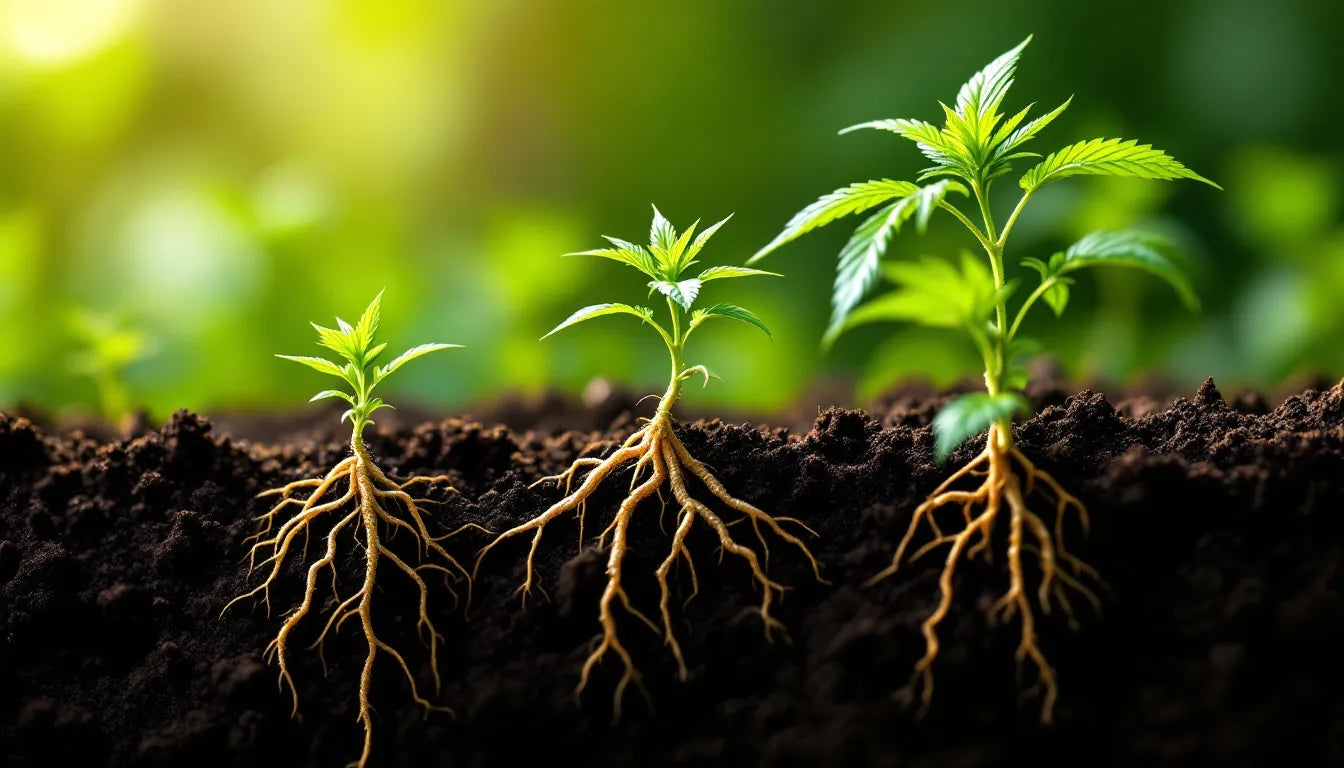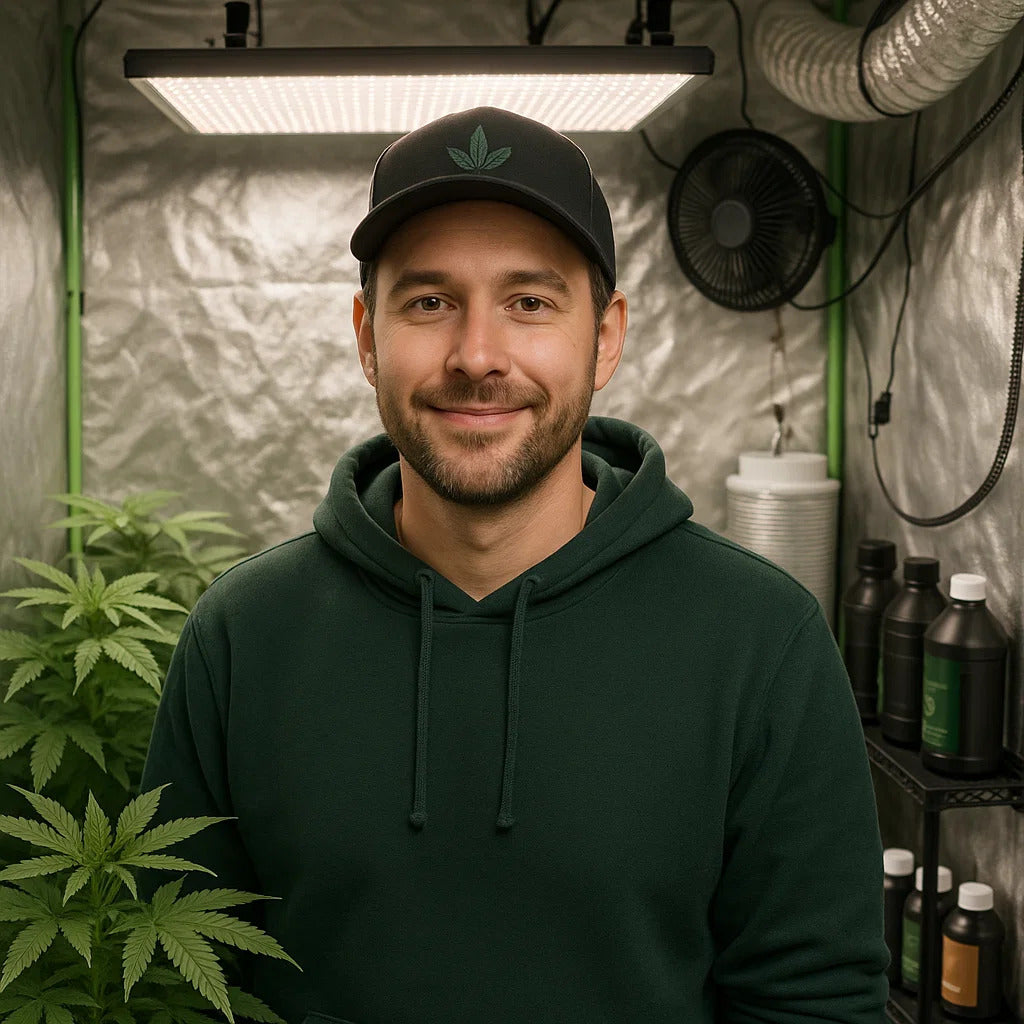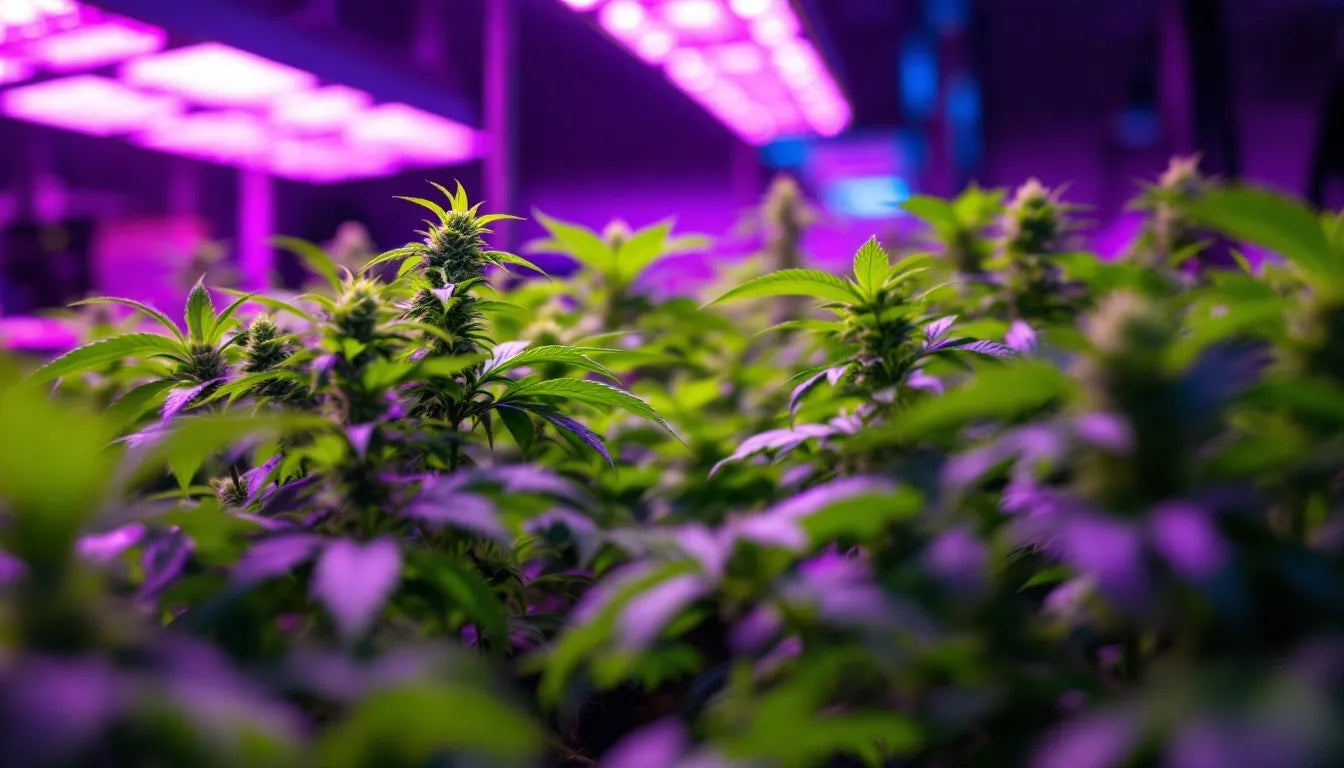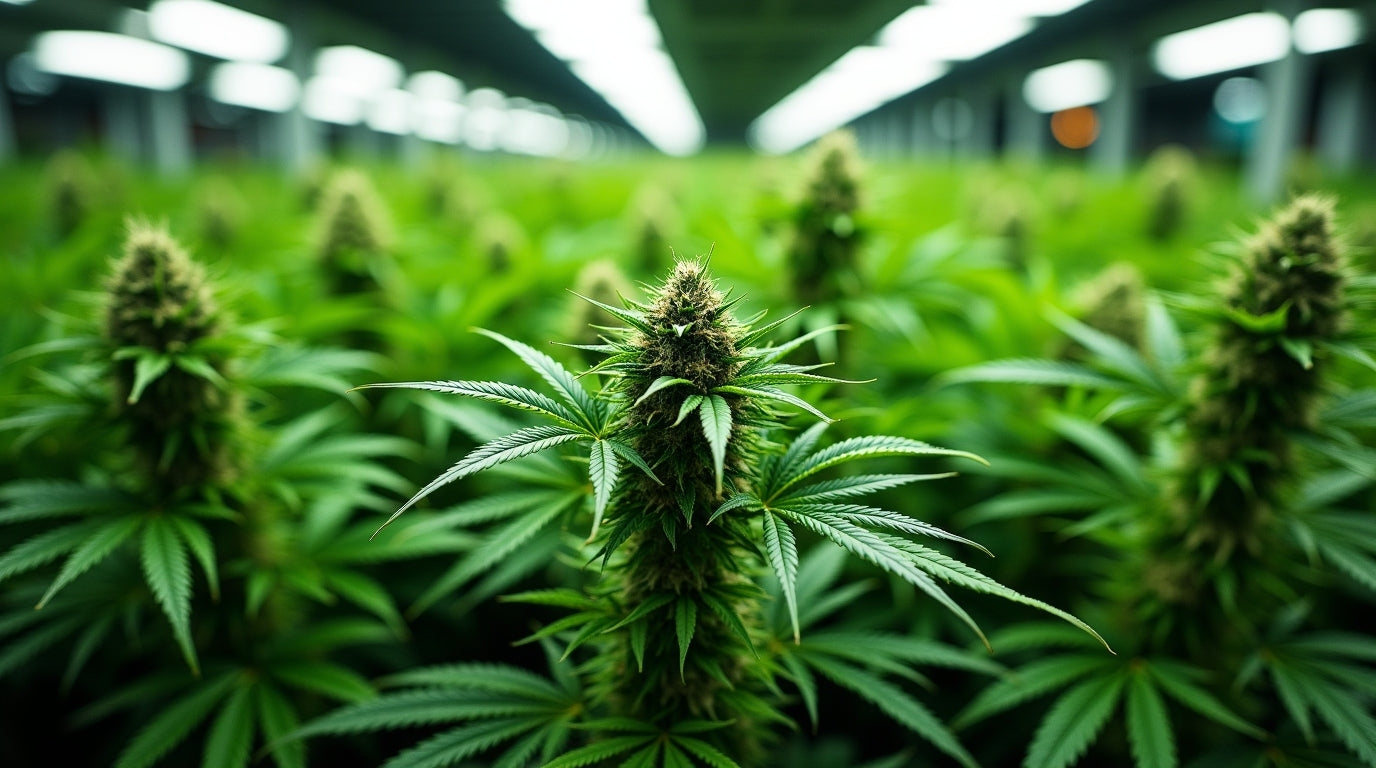
How Do Weeds Grow? Understanding Plant Growth from Seeds to Harvest
Whether you're dealing with unwanted garden weeds or cultivating cannabis (colloquially called "weed"), understanding how plants grow is essential for any successful gardener. Both unwanted weeds and cultivated cannabis share similar growth requirements, but mastering the specific needs of each can make the difference between thriving plants and disappointing results.
For those interested in cannabis cultivation, creating the optimal growing environment starts with quality equipment. A professional grow tent kit provides the controlled conditions necessary for healthy plant development from seed to harvest.
The Universal Requirements: How All Weeds and Plants Grow
Every plant, whether it's an unwanted dandelion in your lawn or a carefully cultivated cannabis plant, needs the same basic elements to survive and thrive. Understanding these fundamental requirements helps explain why some plants seem to grow everywhere while others require careful attention.

The Four Essential Elements
Sunlight: Cannabis plants are happiest when they get between 10–12 hours of direct sunlight per day, while many garden weeds can thrive with much less. Weeds are highly tolerant of extreme conditions and weed seeds that lay dormant in the ground germinate earlier in the growing season.
Water: Cannabis grown in the ground needs around 6 gallons of water per day, while plants grown in controlled environments like pots need closer to 2.5 gallons per day. Garden weeds, however, often survive on minimal water, making them incredibly resilient.
Nutrients: Plants require nitrogen (N), phosphorus (P), and potassium (K) for healthy growth. These nutrients support different stages of development: nitrogen for vegetative growth, phosphorus for root and bud development, and potassium for overall plant health and flowering.
Space: Plants need adequate room for root development and canopy growth. Weeds are just like any other plant - they require sunlight, water, air, and space in order to grow.
The Three Types of Plant Life Cycles
Understanding plant life cycles helps explain why some weeds keep coming back year after year while others appear and disappear seasonally.
Annual Plants (One Growing Season)
Annual weeds spread by setting seed, germinating and growing for one season then dying off on their own at the end of their life cycle. These include:
- Summer Annuals: Germinate in spring, grow all summer, die in fall
- Winter Annuals: Germinate in fall, grow through winter, die in spring
Cannabis Connection: Most cannabis varieties are annual plants, completing their entire life cycle in one growing season. Learn more about cannabis grow stages to optimize each phase.
Biennial Plants (Two-Year Cycle)
Biennial weeds have a two-year life cycle, producing a leafy plant in the first year and flowers in the second year. Examples include wild carrot and some clover varieties.
Perennial Plants (Multi-Year Growth)
Perennial weeds grow for multiple seasons and spread by seeding and through their root system. They lay dormant in the winter and return in the spring. Common examples include dandelions and thistle.
Why Garden Weeds Grow So Successfully
Garden weeds have several evolutionary advantages that make them incredibly successful at colonizing new areas and competing with cultivated plants.

Natural Advantages of Weeds
Early Germination: Weed seeds that lay dormant in the ground also germinate earlier in the growing season, so as soon as temperatures begin to rise, many types of weeds begin to sprout aggressively.
Rapid Reproduction: When actively growing, weeds produce thousands of seeds per plant and disperse them throughout the season.
Efficient Dispersal: Seeds may also stick with animal fur or human clothing, and drop in a lawn or garden. Rain can also disperse seeds in areas where they're unwanted.
Soil Adaptation: Native lawn weeds have already adjusted to your yard's soil, so they are better adapted to grow than plants and seeds you sow yourself.
The Ecological Role of Weeds
While we often view weeds as nuisances, they serve important ecological functions. Any growth on the ground prevents erosion, and when weeds take over bare soil, it's nature's way of protecting the precious topsoil resource.
The growth of most plants — including weeds in general — also feed fungal networks in the soil. Those fungal networks scavenge for nutrients to provide to your plants.
How Cannabis Grows: Optimizing "Weed" Cultivation
While garden weeds grow with minimal care, cannabis cultivation requires attention to detail and optimal growing conditions to produce high-quality results.
The Cannabis Growing Environment
Temperature Control: The optimal day temperature range for cannabis is 24 to 30 °C (75 to 86 °F). Temperatures above 31 °C (88 °F) and below 15.5 °C (60 °F) seem to decrease THC potency and slow growth.
Lighting Requirements: Under artificial light, the plant typically remains under a regime of 16–24 hours of light and 0–8 hours of darkness from the germination until flowering.
Humidity Management: Ideal levels of humidity for optimal growth are 40–60% RH. Dry conditions slow the rate of photosynthesis.
For indoor cultivation, a professional hydroponic grow system provides precise control over all these environmental factors.
Cannabis Nutrition Requirements
Unlike hardy garden weeds that thrive in poor conditions, cannabis plants need carefully balanced nutrition throughout their growth cycle.
Primary Nutrients (NPK):
- Nitrogen: Essential for vegetative growth and leaf development
- Phosphorus: Crucial for root development and the early stages of flower growth, it plays a key role in converting sunlight into chemical energy through photosynthesis
- Potassium: Known as the plant's health guardian, as it helps the plant to resist infection from bacteria and mold
Secondary Nutrients: Cannabis also counts on secondary nutrients like calcium, magnesium, and sulfur to play vital roles in plant growth.
pH Management: Cannabis prefers a pH between 6 and 7 in soil, and between 5.5 and 6.5 in hydroponic media.
Stages of Cannabis Growth: From Seed to Harvest
Understanding each growth stage helps optimize growing conditions and maximize yields.
Germination Stage (1-7 Days)
Cannabis seeds remain inactive until they are exposed to water and light. They are relatively strong and survive well in dark, cool places.
Seedling Stage (1-4 Weeks)
This lasts from 1 to 4 weeks, and is the period of greatest vulnerability in the life cycle of the plant, requiring moderate humidity levels, medium to high light intensity, and adequate but not excessive soil moisture.
Vegetative Stage (1-2+ Months)
In this stage the plant needs a significant amount of light and nutrients, depending on the genetics of the particular plant. It continues to grow vertically and produce new leaves.
Flowering Stage (6-12 Weeks)
During flowering, plants focus energy on bud production rather than vegetative growth. This stage requires specific light cycles and adjusted nutrition.
Learn the complete details about how long to grow cannabis from seed to harvest.
Indoor vs. Outdoor Growing: Controlling the Environment
The choice between indoor and outdoor growing significantly impacts plant development and final results.
Outdoor Growing Advantages
Natural Light: Through the power of photosynthesis, cannabis plants transform light energy from the sun into chemical energy to fuel their growth.
Lower Costs: Outdoor growing eliminates electricity costs for lighting and ventilation.
Larger Plant Size: Growing in the ground provides more space for root expansion, leading to bigger plants and ideally larger yields.
Indoor Growing Benefits
Environmental Control: Indoor growing allows precise control over temperature, humidity, lighting, and nutrients.
Year-Round Cultivation: With an indoor grow room, you have total control over environmental conditions and your plants are able to flower after only a few weeks.
Pest Prevention: Controlled environments reduce pest and disease problems.
For indoor cultivation, investing in quality equipment like large grow tents provides the space and control needed for optimal results.
Common Growing Challenges and Solutions
Both garden weeds and cultivated cannabis face similar challenges, though the solutions may differ.
Nutrient Problems
Deficiencies: Nitrogen deficiency would result in stunted growth, yellowing leaves, and reduced vigor. Phosphorus deficiency leads to poor root growth, delayed flowering, and decreased fruit production.
Nutrient Burn: Cannabis nutrient burn is a frequent issue that appears when cannabis plants receive too many nutrients, leaving salts building up in the soil and plant tissue.
Environmental Stress
Water Problems: Giving too much water can kill cannabis plants if the growing medium gets over-saturated due to oxygen not being able to enter the root system.
Temperature Fluctuations: Cannabis plants that are cultivated indoors are easily impacted by even tiny fluctuations in climate.
Frequently Asked Questions About Plant Growth
How fast do weeds grow compared to other plants?
Weeds have short life cycles, so the weed only has around 5 to 6 weeks to grow and flower. Their rapid growth allows them to outcompete slower-growing cultivated plants.
What makes some plants grow faster than others?
Fast-growing plants typically have efficient nutrient uptake systems, high photosynthetic rates, and genetic advantages for rapid cell division. Cannabis, for example, is a fast growing plant and may deplete the nutrients in its soil over time.
How much light do plants need to grow properly?
Light requirements vary significantly. Cannabis plants are happiest when they get between 10–12 hours of direct sunlight per day, though it is possible to grow healthy cannabis plants outdoors with a minimum of 6 hours of uninterrupted sunlight.
Why do some weeds keep coming back every year?
Perennial weeds grow for multiple seasons and spread by both setting seed and through their root system. They lay dormant in the winter and return in the spring.
Can you prevent weeds from growing?
Yes, through various methods including mulching, proper plant spacing, and maintaining healthy soil conditions. By covering your garden with mulch, you're preventing seeds below from sprouting, and you're preventing most seeds that blow into your garden from gaining access to the soil below.
Growing Equipment for Optimal Results
Whether you're managing garden weeds or cultivating cannabis, having the right tools makes a significant difference in your success.
For cannabis cultivation specifically, professional equipment ensures consistent results:
- 3x3 grow tents for small-scale indoor growing
- Grow tent accessories for ventilation and environmental control
- Mushroom grow tents for specialized cultivation needs
Summary: Mastering Plant Growth for Better Results
Key Takeaway: All plants, from unwanted garden weeds to cultivated cannabis, require the same basic elements: sunlight, water, nutrients, and space. However, optimizing these conditions for specific plants requires understanding their unique needs and growth patterns.
Essential Points: Garden weeds succeed through rapid reproduction, early germination, and adaptability to harsh conditions. Cannabis cultivation requires precise environmental control, balanced nutrition, and attention to specific growth stages for optimal yields.
Start Your Growing Journey Today
Whether you're learning to control garden weeds or beginning cannabis cultivation, success starts with understanding how plants grow and providing optimal conditions for your specific goals.
Ready to start growing? Explore our complete range of grow tent kits designed for every level of grower. From beginners to experts, we provide the controlled environments necessary for consistent, high-quality results.
For those interested in advancing their knowledge, check out our comprehensive guides on how to grow cannabis indoors and hydroponic cannabis growing to take your cultivation to the next level.
Remember, successful growing is about understanding your plants' needs and creating the optimal environment for growth. With the right knowledge and equipment, you can achieve professional results regardless of your experience level.

Lena Myles
I'm a mushroom enthusiast and home cook based in Oregon. I'm passionate about foraging and creating fungi-focused recipes, especially delicious, plant-based dishes using gourmet mushrooms like trumpet, shiitake, and oyster. When I’m not in the kitchen, you’ll usually find me wandering the woods in search of new wild flavors.


